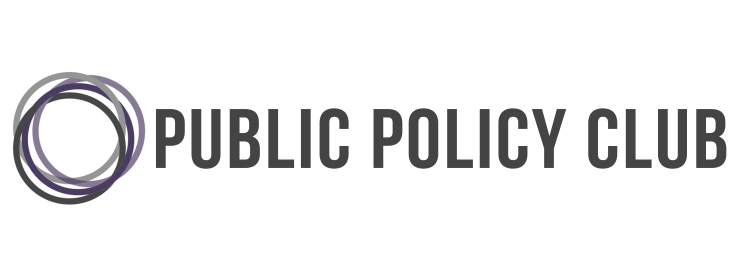Written by Ethan McCormick
In 2016 the John Key government announced that New Zealand would eradicate all rats, possums, and mustelids by 2050. It’s a goal of mind-boggling scale that was dubbed “New Zealand’s moon shot” by the late Sir Paul Callaghan [1]. Since the announcement, the mission of Predator Free 2050 has received support from a range of stakeholders. However, success hinges on a major breakthrough in pest eradication within the next thirty years. With the 2050 deadline fast approaching, will New Zealand achieve a world first?
A Forgotten Past
Isolated for from the southern continents for 80 million years, New Zealand has developed a weird and wonderful array of biodiversity. Aside from a few small bats, our wildlife evolved in the absence of mammals. New Zealand was a land of birds, made famous by megafauna like the Moa and Haast’s Eagle. New Zealand was also the last country on earth to be settled by humans. The arrival of Māori saw many large species hunted to extinction. At the same time, Pacific Rats (Kiore) and Pacific Dogs (Kure) killed off several species.
Yet by the time of Captain James Cook’s arrival in 1769, New Zealand was still one of the last pristine environments on earth. Botanist Joseph Banks described the birdsong as “the most melodious wild music I have ever heard, almost imitating small bells but with the most tuneable silver sound imaginable.” [2]
Cute and Fluffy Killing Machines
New Zealand has three major predators – rats, possums, and mustelids – together known as ‘the big three.’ The first major predators to arrive in New Zealand were the ship rat and Norway rat. Both species were stowaways aboard the ships of European explorers. Both species are similar by appearance but have a few important distinguishing features.
Dubbed the most successful species second only to humans, ship rats have colonised nearly every corner of the globe. Aided by their climbing ability, ship rats will devour the eggs and chicks of nesting birds. They are even known to consume small mother birds on the nest. Norway rats are larger by comparison and are limited to prey they can find on the ground. The key problem with rats is their rate of reproduction. Theoretically, a pair of norway rats could produce 1250 descendants in a single year under ideal conditions [3]. It is this rapid reproduction that allowed rats to decimate birdlife shortly after their arrival.
While the introduction of rats was accidental, the arrival of possums and mustelids was a planned process. In 1837 the common brushtail possum was introduced from Australia to kickstart a fur trade. Instead, possums browsed on vegetation and decimated forest canopies across the country. Like rats, possums also eat eggs, chicks, and birds.
Mustelids are a family of carnivorous animals that in New Zealand comprise ferrets, stoats, and weasels. Shipped to New Zealand to control rabbits (another introduced pest), it was only after extensive debate in Parliament that mustelid introductions were approved in 1881 [4]. Of the trio, stoats are the biggest killers, accounting for the decline of iconic New Zealand birds like the Kiwi, Takahe, and Kakapo.
Before introduced predators, Kakapo were so common that it was said you could shake a tree, and several would fall to the ground [5]. Currently, only 202 individuals remain. Furthermore, 41% of New Zealand’s endemic bird species are extinct [6]. Of those remaining, 73% are threatened. That’s not to mention the many amphibians, reptiles, and bats that have gone extinct alongside their feathered counterparts.
Saving Paradise
The turning point came in 1963 with the ship rat invasion of Big South Cape Island. Located 1.5m southwest of Stewart Island, Big South Cape harboured the last populations of Stewart Island snipe, Stead’s bush wren, and greater short-tailed bat. Scientists watched as all three species went extinct before their eyes [7].
Since then, much has changed. New Zealand is now home to numerous predator-free islands and fenced mainland sanctuaries. Sanctuaries like Wellington’s Zealandia have witnessed astounding success. Birds like Kaka and Karearea have ventured beyond the fence line and can now be seen in surrounding suburbs. Predator Free 2050 hopes to do the same, but on a far grander scale.
The project consists of three core organisations: Predator Free NZ, Predator Free 2050 Ltd, and The Department of Conservation (DOC). Predator Free NZ enables New Zealanders to get involved with the project on a grassroots level. Predator Free 2050 Ltd is the business arm that provides funding for key projects and scientific research. DOC acts as the project’s backbone and is responsible for protecting threatened species on public land. Alongside these three organisations are numerous other stakeholders which all play important roles. These include Forest & Bird, Save The Kiwi, MPI, Farmers, Iwi, and Regional Councils.
Predator Free 2050 also has unanimous political support. Since its establishment in 2016 by the National Government, the project has experienced funding boosts under Labour. At present, all five political parties in Parliament support the project.
Emerging Technologies
It is openly admitted that a major breakthrough will be needed for New Zealand to become Predator Free by 2050. Two important possible candidates for this breakthrough are gene drives and a new management technique dubbed ‘remove and protect.’
Gene drives are a type of genetic modification that increase the chances an organism will inherit a specific gene. The result is that all offspring in a population will eventually inherit a single desired trait. In theory, gene drives could be used to select the gender of any of the three target predators. For example, a gene that codes for only male offspring might be introduced to a population of rats. Eventually this gene would spread through the population until all rats were male and the population could no longer reproduce.
In practice though, gene drives are not yet a feasible option. There are fears that a gene drive could be exported overseas and threaten rat populations in their natural ecosystems. However, as the science progresses, it is possible that gene drives will become a safer and more effective option to achieve Predator Free 2050 [8].
A second promising option is an innovative management strategy called ‘remove and protect.’ Research institute Zero Invasive Predators (ZIP) developed the technique in 2020. ZIP has so far eradicated all possums, rats, and stoats from a 12,000-hectare block of Southland’s remote Perth River Valley. Astonishingly, reinvasion has been prevented all without the use of fences.
Remove and protect first eradicates predators using aerial poison drops. To prevent reinvasion, features of the natural landscape are used as barriers – for example a mountain or fast flowing river. A combination of traps and AI cameras are then used to defend areas that are prone to reinvasion.
With the Perth River Valley now predator free, the remove and protect approach is now being rolled out to 100,000 hectares of South Westland [9].
Hope at the End of the Tunnel
Predator Free is an audacious goal. It aims to achieve the impossible by shutting the lid on an ecological pandora’s box. However, with promising technology and a bit of Kiwi ingenuity, New Zealand may just be well on the way to achieving its moonshot.
(To learn more about the people making Predator Free 2050 a reality, check out TVNZ’s documentary ‘Fight For The Wild’: https://www.tvnz.co.nz/logout).
References
[1] https://tuiatetaiao.nz/about-us/timeline/
[2] https://teara.govt.nz/en/speech/10106/joseph-bankss-journal
[4] http://press-files.anu.edu.au/downloads/press/n2519/pdf/08_king.pdf
[5] Pers. Comm.
[6] https://environment.govt.nz/assets/Publications/Files/ser-1997.pdf
[7] https://teara.govt.nz/en/land-birds-overview/page-4
[8] https://allianceforscience.cornell.edu/blog/2018/07/new-gene-drive-off-switch-assuage-fears-critics/




